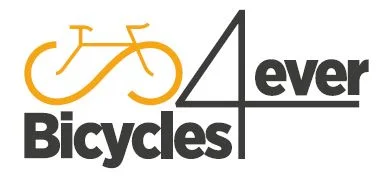Inside Road Cycling’s Only Independent Bike Testing | Chris Miller Cycling
Source: Chris Miller Cycling Youtube Channel: Inside Road Cycling’s Only Independent Bike Testing
Video Inside Road Cycling’s Only Independent Bike Testing with Chris Miller Cycling
Video Inside Road Cycling’s Only Independent Bike Testing with Chris Miller Cycling YouTube Channel.
Inside Road Cycling’s Only Independent Bike Testing
A Deep Dive into Objective Biking Testing and Reviews
In the world of cycling, there is a plethora of information about bikes, their performance, and their capabilities. However, there is one source that stands out as a unique and comprehensive resource for objective scientific testing in the cycling industry: tour magazine. With over two decades of experience in performing objective scientific testing on bikes, the head of engineering at tour magazine, Robert Kernin, is a leading expert in the field. Today, we will delve into the fascinating world of objective cycling testing, exploring how it is done, which bikes perform best in those tests, and where the industry and the magazine are headed in the future.
The introduction to tour magazine
Tour magazine has a long history dating back to the 1980s when H. Christian Smik, the predecessor of Robert Kernin, introduced the magazine world to objective testing methods. The goal of tour magazine has always been to have objective testing in place, ensuring that all their reviews and ratings are based on scientific data.
The process of selecting bikes for testing
One may wonder how tour magazine selects the bikes for testing. According to Robert Kernin, the first step is to make an editorial choice based on what would make an interesting story. This means that simply having a new bike is not enough to warrant a test; it must be compelling from an editorial perspective. Additionally, the magazine requests the manufacturers to send in the bikes, and they test them for free before returning them – a process that ensures an unbiased approach to testing.
The intricacies of aerodynamic testing
One of the key aspects of bike testing is aerodynamic testing, which is done in the GST wind tunnel in Southern Germany. Here, tour magazine uses a specially designed process to set up the bike in the wind tunnel, using a moving leg dummy without an upper torso to eliminate wind resistance. The process involves 41 measurements in one sweep, allowing for a comprehensive understanding of the bike’s behavior under different wind conditions. The result is precise aerodynamic data that provides valuable insights into a bike’s performance.
The impact of tire testing on overall bike performance
A lesser-known but crucial aspect of bike testing at tour magazine is tire testing. This involves testing the rolling resistance, grip, and puncture resistance of different tires to understand their impact on overall bike performance. The results of tire testing play a significant role in the overall scoring of the bike, as tires are a crucial part of the performance equation.
The influence of stiffness testing on bike ratings
Stiffness testing is another critical component of bike testing at tour magazine. This includes testing the bottom bracket stiffness, front and rear compliance, and overall riding stability of the bikes. The results of stiffness testing have a direct impact on the ratings of the bikes, ensuring that the performance and handling capabilities are thoroughly evaluated.
The insights gained from component testing
In addition to the bike testing, tour magazine also conducts component testing, particularly for group sets and brakes. This comprehensive approach ensures that every aspect of the bike is thoroughly evaluated, providing riders with valuable insights into the performance of different components.
The impact of wheel behavior on bike performance
Another essential yet often overlooked aspect of bike testing is wheel behavior testing. This involves measuring the torque introduced into the steering system by side winds, providing valuable insights into how different wheel sets handle crosswinds. The results of wheel behavior testing can significantly impact a rider’s experience on the road, as the handling and stability of the bike are crucial factors in overall performance.
The significance of subjective bike testing
While the scientific testing at tour magazine is crucial for understanding the objective performance of bikes, the riders’ subjective experience also plays a significant role. This provides a comprehensive picture of a bike’s performance, as it takes into account both scientific data and real-world riding experiences. Ultimately, the combination of scientific testing and subjective feedback leads to a more well-rounded understanding of a bike’s capabilities.
Inside Road Cycling’s Only Independent Bike Testing
In conclusion, tour magazine’s approach to bike testing goes beyond the traditional scope of reviews and ratings. By focusing on objective scientific testing, tire testing, stiffness testing, component testing, and wheel behavior testing, tour magazine provides an in-depth understanding of bike performance. This comprehensive approach ensures that riders have access to accurate and reliable information when making decisions about their cycling equipment. As the industry and the magazine continue to evolve, the future of bike testing and reviews is set to become even more refined and comprehensive, providing cyclists with valuable insights into the bikes they ride.
The opinions expressed in this space are the sole responsibility of the YouTube Channel Chris Miller Cycling and do not necessarily represent the views of CicloNews.

